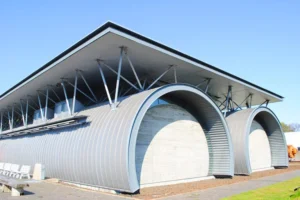
Hidden beneath the Tsugaru Strait in northern Japan lies one of the world’s greatest engineering marvels — the Seikan Tunnel (青函トンネル).
Connecting Aomori Prefecture on Japan’s main island of Honshu and Hokkaido, this 53.85-kilometer undersea tunnel is a testament to Japanese innovation and determination.
At the Seikan Tunnel Museum in Sotogahama Town, travelers can experience the incredible story of how this undersea passage was built — from the struggles of construction to the cutting-edge railway systems of today.
1. Overview
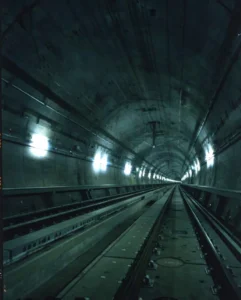
The Seikan Tunnel Museum (青函トンネル記念館) is located on the northern tip of Honshu, in Yoshioka, Sotogahama Town, Aomori Prefecture.
It was established to commemorate and educate visitors about the construction and operation of the Seikan Tunnel, which connects Honshu and Hokkaido beneath the sea floor of the Tsugaru Strait.
-
Opened: 1988
-
Tunnel Length: 53.85 km (33.4 miles) — world’s longest undersea tunnel
-
Depth: Maximum of 240 meters below sea level
-
Travel Time (by train): Approximately 25 minutes between Aomori and Hakodate
The museum allows visitors to see real equipment, construction models, and even descend into a former working tunnel section, making it a fascinating stop for engineering enthusiasts, rail fans, and curious travelers alike.
Contents
2. History and Construction
The Seikan Tunnel was conceived after a series of tragic ferry accidents in the Tsugaru Strait, most notably the Toyamaru Disaster of 1954, which claimed over 1,000 lives during a typhoon.
In response, Japan began planning a safe and permanent rail link between Honshu and Hokkaido.
Timeline of Construction:
-
1946: Initial geological surveys begin
-
1971: Full-scale construction starts
-
1983: Main tunnel breakthrough achieved
-
1988: Tunnel officially opens for service
The project took 17 years, cost ¥690 billion (over USD 5 billion), and required the labor of more than 14 million workers in total over two decades.
The construction faced enormous challenges — from high water pressure and unstable rock to deadly floods and explosions — but Japanese engineers persevered through innovation, courage, and teamwork.
3. Engineering Feats and World Records
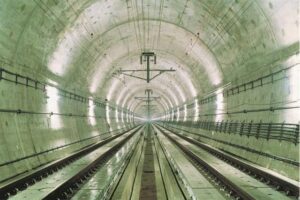
At 53.85 km long, the Seikan Tunnel was the longest railway tunnel in the world until 2016 (when Switzerland’s Gotthard Base Tunnel surpassed it).
However, it still holds the record for the longest undersea tunnel section, stretching 23.3 km (14.5 miles) beneath the ocean floor.
Engineering Highlights:
-
Depth: 240 m below sea level
-
Rock Pressure: Up to 110 atmospheres
-
Drilling Speed: Average of 10 cm per day in hard rock
-
Ventilation Shafts: Up to 180 m deep
-
Waterproofing System: Over 500,000 tons of concrete used
The Seikan Tunnel remains one of Japan’s greatest infrastructure achievements, combining human endurance, precision engineering, and advanced tunneling technology.
4. Inside the Seikan Tunnel Museum
The museum offers interactive and visual exhibits that bring the history and technology of the tunnel to life.
Main Exhibits Include:
-
Scale Models and Diagrams: Showing how the tunnel was excavated and waterproofed.
-
Railway Technology Zone: Explains how trains safely operate under the sea using specialized signaling and ventilation systems.
-
Tools and Machinery: Original drilling equipment, helmets, and protective gear used by tunnel workers.
-
Documentary Theater: A 20-minute film with rare footage of the construction process.
-
Life of the Workers: Photos and testimonies from engineers and miners who risked their lives underground.
A highlight is the panoramic viewing area, which overlooks the Tsugaru Strait — a symbolic contrast between the sea above and the tunnel below.
5. The Underground Tour Experience
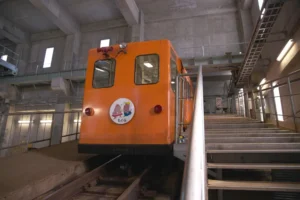
One of the most unique experiences in Japan — visitors can actually descend into a real tunnel section that was once used for maintenance during the Seikan Tunnel’s construction and operation.
Yoshioka-Kaitei (吉岡海底) Site
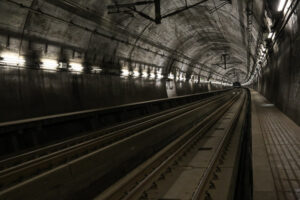
-
Accessed via a special cable car, which travels down 140 meters underground
-
Inside, visitors can walk through a 2.6-km section of the actual service tunnel
-
Displays show geological layers, drilling marks, and air vents used during construction
The atmosphere is cool and slightly damp, with the constant hum of underground ventilation — an unforgettable sensory experience.
Tip: Wear comfortable shoes and a jacket — it’s about 12°C (54°F) year-round underground.
6. How to Get There
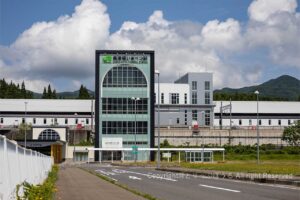
Location:
Seikan Tunnel Museum (青函トンネル記念館)
11-2 Tennozaki, Sotogahama Town, Aomori Prefecture, Japan
From Aomori City:
-
By Car: About 1 hour 15 minutes via National Route 280
-
By Train + Bus:
-
Take the JR Tsugaru Line to Kanita Station (約1 hour)
-
From Kanita Station, take a local bus or taxi (approx. 15 minutes)
-
From Hakodate (Hokkaido):
-
Take the Hokkaido Shinkansen to Okutsugaru-Imabetsu Station, then about 20 minutes by taxi to the museum.
Parking: Free on-site parking available.
Note: The underground section may close during winter (December–March) due to safety and weather conditions.
7. Nearby Attractions
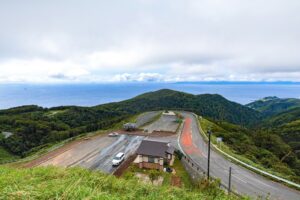
While in Sotogahama, you can explore other highlights of northern Aomori:
-
Cape Tappi (竜飛岬): Windy cliffs overlooking the Tsugaru Strait, with a lighthouse and panoramic views of Hokkaido.
-
Stairs National Road (階段国道): Japan’s only “staircase national road” — a quirky photo spot!
-
Kanita Port: Small fishing port with local seafood restaurants serving fresh squid and scallops.
-
Tappi Misaki Wind Park: Dozens of wind turbines standing along the ridge — especially beautiful at sunset.
8. Best Time to Visit
<a id="best-time-to-visit"></a>
| Season | Highlights | Notes |
|---|---|---|
| Spring (Apr–Jun) | Pleasant weather, cherry blossoms in Aomori | Museum fully open |
| Summer (Jul–Sep) | Ideal for combining with sightseeing at Cape Tappi | Warm and sunny |
| Autumn (Oct–Nov) | Vibrant fall foliage on mountain roads | Crisp and cool |
| Winter (Dec–Mar) | Scenic snow-covered views, but underground tour often closed | Check ahead |
9. Travel Tips and Visitor Information
-
Opening Hours: 9:00 AM – 5:00 PM (last entry 4:30 PM)
-
Closed: December – March (due to snow and safety inspections)
-
Admission Fee:
-
Adults: ¥1,200 (includes cable car ride to the tunnel)
-
Children: ¥600
-
-
Photography: Allowed in most areas (no flash in exhibits)
-
Facilities: Café, souvenir shop, rest area, and observation deck
-
Language Support: Basic English panels and brochures available
Travel Tip: Combine your visit with a trip to Aomori’s Nebuta Museum or Hakodate’s night view for a complete north-Japan itinerary.
10. Final Thoughts
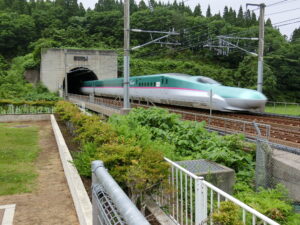
The Seikan Tunnel Museum is far more than a museum — it’s a tribute to human perseverance and the power of engineering to connect people across the sea.
Walking through its underground passages, you can feel the courage and determination of the workers who carved a path beneath the ocean — one meter at a time.
For travelers fascinated by technology, history, or Japan’s hidden stories, this museum offers a journey into one of the greatest achievements of the 20th century.
Related articles
Official Website
http://seikan-tunnel-museum.jp/en/
Accommodation sites
Agoda

